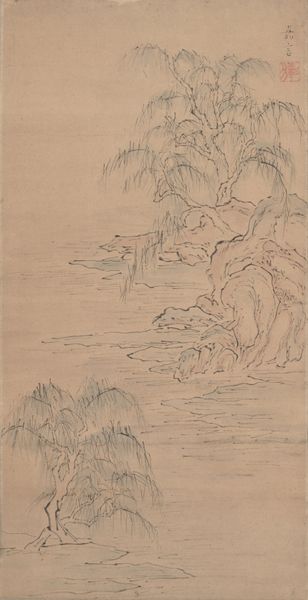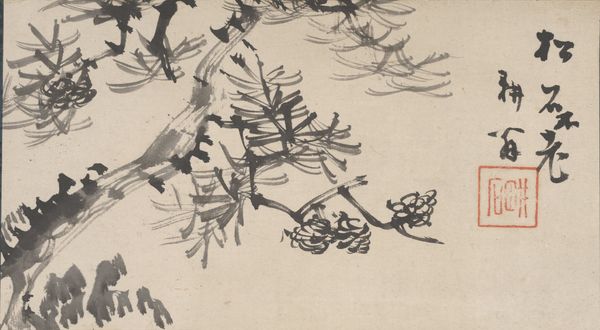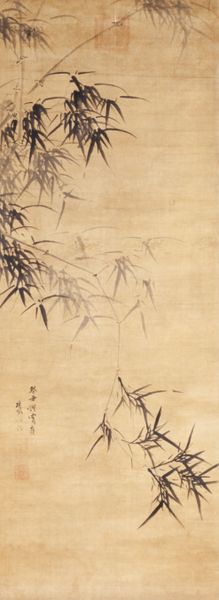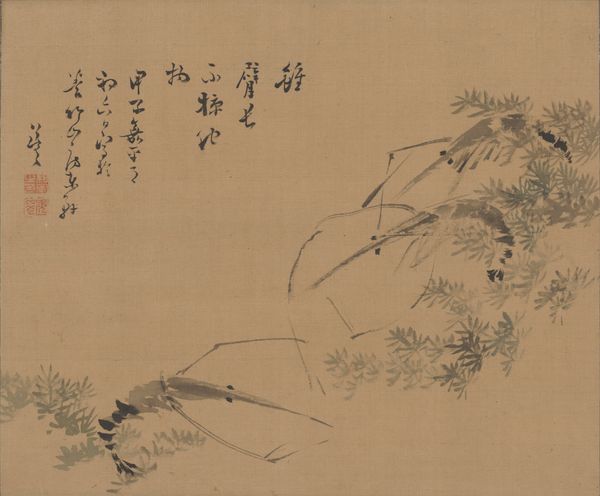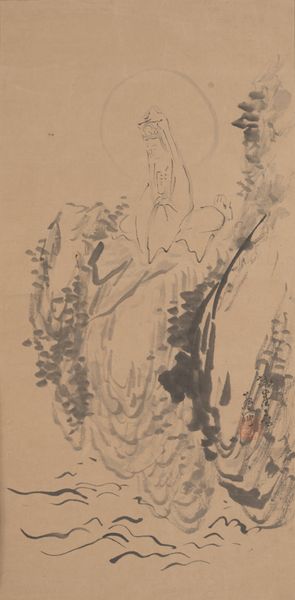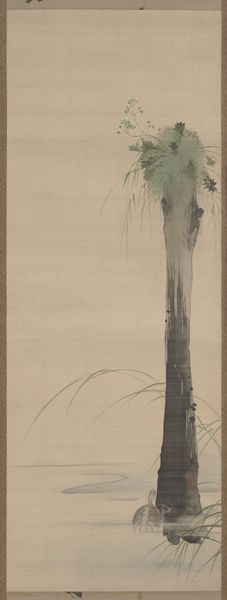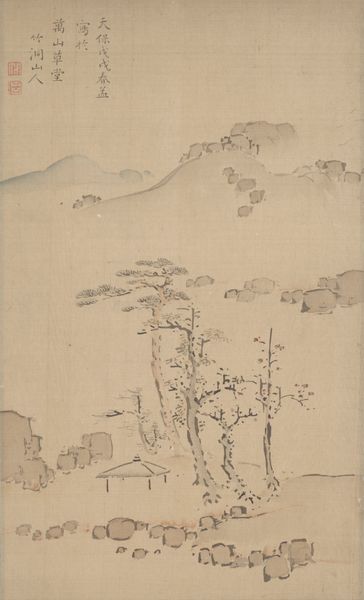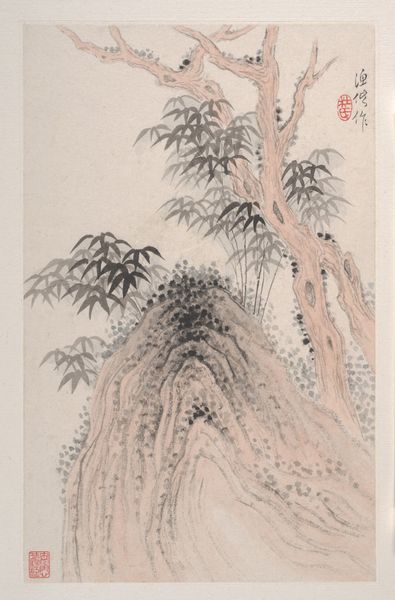
drawing, paper, ink-on-paper, ink
#
drawing
#
asian-art
#
landscape
#
paper
#
ink-on-paper
#
ink
#
pencil drawing
#
orientalism
Dimensions: 58 1/4 × 30 3/4 in. (147.96 × 78.11 cm) (image)87 1/16 × 37 11/16 in. (221.14 × 95.73 cm) (mount, without roller)
Copyright: Public Domain
Hidaka Tetsuo made *Orchids and Rocks* using ink on paper, materials fundamental to East Asian art history. The work is a study in controlled fluidity. Notice how the ink, applied with a brush, creates forms that seem both deliberate and spontaneous. The artist coaxes out a range of tones from the ink, using more water to achieve light greys, and applying the pigment straight for deep blacks. This play of light and dark gives depth to the rocks and volume to the orchids. The act of painting with ink carries significant cultural weight, tied to calligraphy and contemplative practices. Skilled painters like Tetsuo would have spent years mastering brush control and ink consistency. While seemingly simple, the monochrome ink painting speaks to profound themes of nature, impermanence, and the artist's state of mind. It reminds us that the most profound artistic statements can be made with the simplest means.
Comments
minneapolisinstituteofart almost 2 years ago
⋮
Clumps of orchids cling to rocks in this composition by Hidaka Tetsuō. Like many other famous painters of orchids, Tetsuō avoids solid outlines and instead uses several tones of ink wash to render the orchids and rock surfaces—an old Chinese style known as “boneless.” Tetsuō was a Zen Buddhist priest in Nagasaki, in far western Japan, rising to the rank of chief abbot of a major Zen temple. After retiring in his mid-50s, he traveled throughout Japan for several years, then returned to Nagasaki and spent the rest of his life in seclusion within the precincts of another Zen temple. There he spent much of his time writing and creating paintings in ink, mostly of landscapes and orchids, the subject for which he was seen as a master.
Join the conversation
Join millions of artists and users on Artera today and experience the ultimate creative platform.

